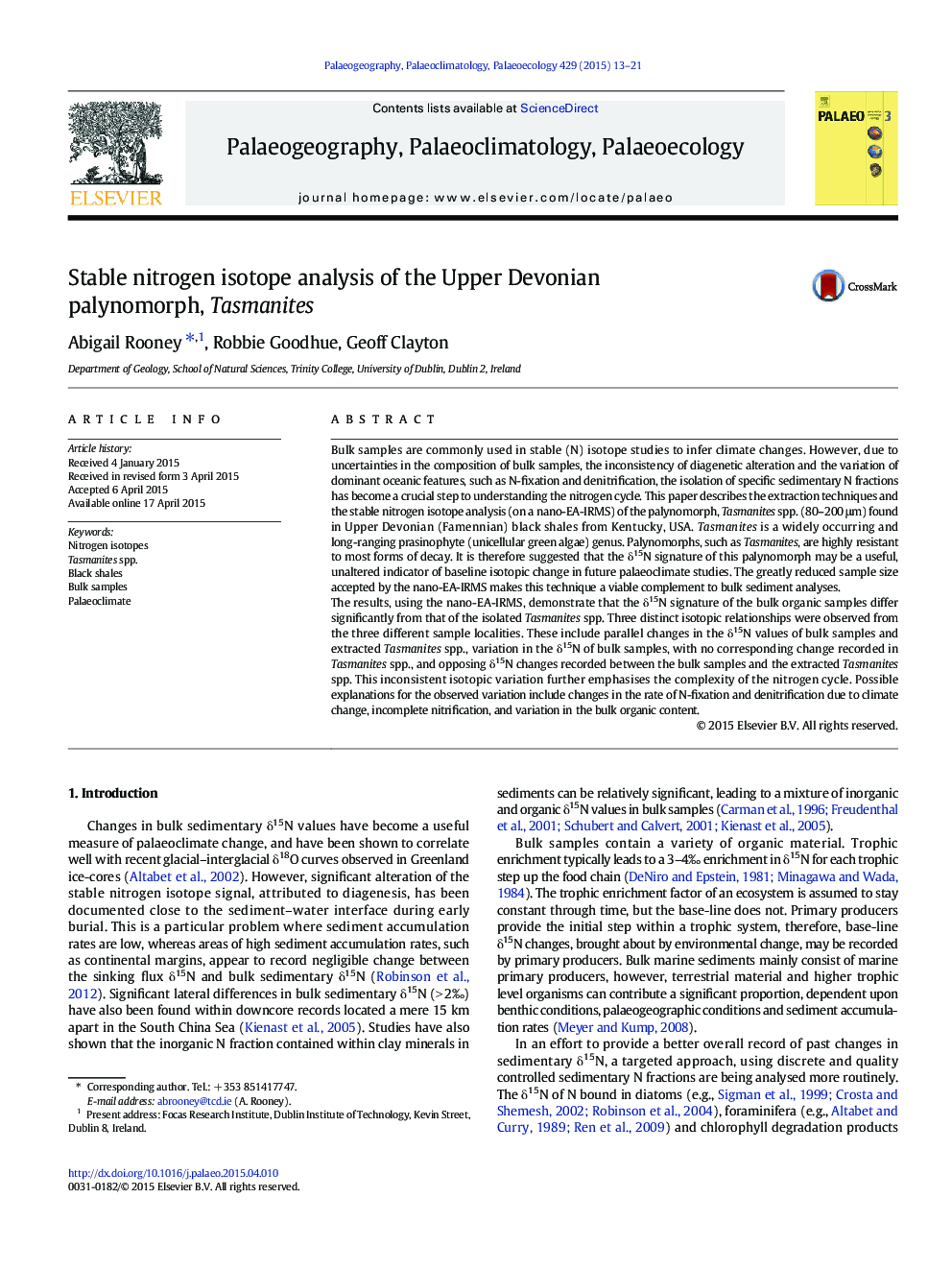| کد مقاله | کد نشریه | سال انتشار | مقاله انگلیسی | نسخه تمام متن |
|---|---|---|---|---|
| 4465963 | 1622161 | 2015 | 9 صفحه PDF | دانلود رایگان |
• δ15N values were determined from a Palaeozoic palynomorph taxon (Tasmanites spp.).
• 3 distinct δ15N patterns were observed between bulk samples and Tasmanites.
• The outlined technique may be useful for high precision palaeoclimate investigation.
• Treatment with HCl, HF and NaClO permitted easier extraction of Tasmanites.
• HCl, HF and NaClO led to no change in the δ15N or δ13C signature of Tasmanites.
Bulk samples are commonly used in stable (N) isotope studies to infer climate changes. However, due to uncertainties in the composition of bulk samples, the inconsistency of diagenetic alteration and the variation of dominant oceanic features, such as N-fixation and denitrification, the isolation of specific sedimentary N fractions has become a crucial step to understanding the nitrogen cycle. This paper describes the extraction techniques and the stable nitrogen isotope analysis (on a nano-EA-IRMS) of the palynomorph, Tasmanites spp. (80–200 μm) found in Upper Devonian (Famennian) black shales from Kentucky, USA. Tasmanites is a widely occurring and long-ranging prasinophyte (unicellular green algae) genus. Palynomorphs, such as Tasmanites, are highly resistant to most forms of decay. It is therefore suggested that the δ15N signature of this palynomorph may be a useful, unaltered indicator of baseline isotopic change in future palaeoclimate studies. The greatly reduced sample size accepted by the nano-EA-IRMS makes this technique a viable complement to bulk sediment analyses.The results, using the nano-EA-IRMS, demonstrate that the δ15N signature of the bulk organic samples differ significantly from that of the isolated Tasmanites spp. Three distinct isotopic relationships were observed from the three different sample localities. These include parallel changes in the δ15N values of bulk samples and extracted Tasmanites spp., variation in the δ15N of bulk samples, with no corresponding change recorded in Tasmanites spp., and opposing δ15N changes recorded between the bulk samples and the extracted Tasmanites spp. This inconsistent isotopic variation further emphasises the complexity of the nitrogen cycle. Possible explanations for the observed variation include changes in the rate of N-fixation and denitrification due to climate change, incomplete nitrification, and variation in the bulk organic content.
Journal: Palaeogeography, Palaeoclimatology, Palaeoecology - Volume 429, 1 July 2015, Pages 13–21
